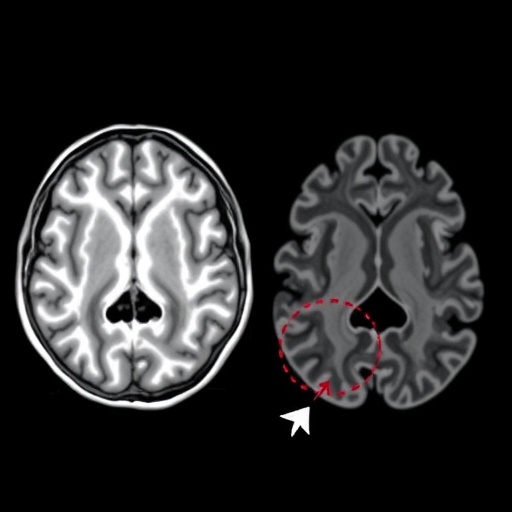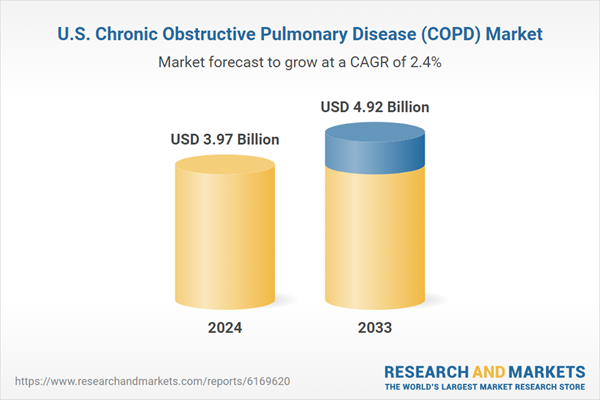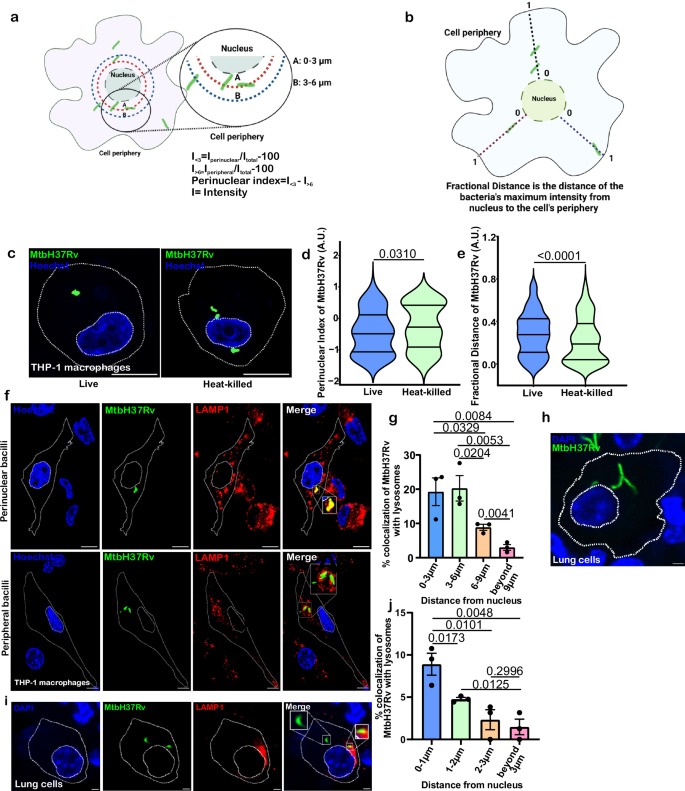Report on Neurodevelopmental Research in Preterm Infants and its Alignment with Sustainable Development Goals
Introduction: Advancing Neonatal Health through Innovative Research
A recent study by Xu et al. utilizes advanced magnetic resonance imaging (MRI) to assess hippocampal glutamate levels and morphometric changes in low-birth-weight preterm infants. This research provides critical insights into the neurodevelopmental challenges faced by this vulnerable population, directly supporting the objectives of Sustainable Development Goal 3 (SDG 3), which aims to ensure healthy lives and promote well-being for all at all ages. By enhancing the understanding of early brain development, this work paves the way for interventions that can improve long-term health outcomes.
Methodology and Key Findings
The study leverages innovative diagnostic imaging, a key component of SDG 9 (Industry, Innovation, and Infrastructure), to non-invasively monitor the brains of preterm infants. The primary methods and findings include:
- Advanced MRI Techniques: Quantification of hippocampal glutamate, the brain’s primary excitatory neurotransmitter, and detailed morphometric analysis of the hippocampus.
- Identification of Biomarkers: The research identified specific physiological alterations in low-birth-weight infants, establishing a connection between brain structure, neurochemistry, and potential cognitive outcomes.
- Significant Morphological Changes: A key finding was a notable reduction in hippocampal volume in low-birth-weight preterm infants compared to their term-born peers, indicating impaired neurogenesis and increased vulnerability to cognitive deficits.
Contributions to Sustainable Development Goal 3: Good Health and Well-being
The research by Xu et al. makes a significant contribution to achieving targets within SDG 3, particularly Target 3.2, which seeks to end preventable deaths of newborns and children under five years of age. The study’s implications include:
- Early Diagnosis and Intervention: By identifying neurochemical imbalances and structural changes early, the findings open new avenues for targeted neuroprotective and therapeutic strategies. This proactive approach can mitigate the long-term impact of preterm birth on cognitive and emotional health.
- Enhanced Neonatal Care: The insights gained can inform and improve clinical protocols for monitoring at-risk infants, leading to more personalized and effective care that supports optimal neurodevelopment.
- Foundation for Lifelong Health: Ensuring healthy brain development in infancy is fundamental to an individual’s lifelong well-being, reducing the prevalence of neurodevelopmental disorders and promoting healthier populations.
Addressing SDG 10 (Reduced Inequalities) and Supporting SDG 4 (Quality Education)
The study underscores the intersection of health outcomes with broader socioeconomic factors, aligning its relevance with SDG 10 and SDG 4.
Socioeconomic Disparities and Health Equity (SDG 10)
- Low birth weight is often linked to socioeconomic determinants such as maternal health, nutrition, and access to quality prenatal care.
- By providing tools to address the physiological consequences of these inequalities, this research supports efforts to ensure that all infants, regardless of their circumstances at birth, have an equal opportunity for healthy development.
Foundations for Learning and Development (SDG 4)
- Early neurodevelopment is intrinsically linked to future cognitive abilities and educational attainment.
- Interventions based on this research can help ensure that children born preterm have the neurological foundation necessary to benefit from quality education, contributing to Target 4.2 concerning early childhood development.
Conclusion: A Path Forward for Global Neonatal Health
The research conducted by Xu and colleagues represents a critical advancement in neonatal health, with profound implications for global development objectives. By integrating advanced technology (SDG 9) to improve health outcomes (SDG 3), the study not only enhances our understanding of early brain development but also highlights pathways to reduce health inequalities (SDG 10) and support future educational success (SDG 4). Continued investment in such research and the translation of its findings into clinical practice are essential for advancing the well-being of the world’s most vulnerable infants and achieving the Sustainable Development Goals.
Analysis of Sustainable Development Goals (SDGs) in the Article
1. Which SDGs are addressed or connected to the issues highlighted in the article?
-
SDG 3: Good Health and Well-being
The article is fundamentally centered on health, specifically neonatal health and the long-term well-being of preterm, low-birth-weight infants. It discusses “neurodevelopmental challenges,” “cognitive impairments,” and the development of “effective monitoring and intervention strategies” to improve health outcomes for this vulnerable population.
-
SDG 9: Industry, Innovation, and Infrastructure
The research described in the article relies heavily on technological and scientific innovation. Phrases like “Recent advancements,” “groundbreaking research,” and the use of “sophisticated MRI techniques” directly point to the role of scientific research and advanced technological infrastructure in addressing complex health issues.
-
SDG 10: Reduced Inequalities
The article connects the health issue of low birth weight to broader social and economic disparities. It explicitly states, “Low birth weight commonly aligns with elements such as maternal health, access to prenatal care, and environmental stressors.” This highlights that inequalities in access to healthcare and socioeconomic conditions contribute to the vulnerability of these infants, making the effort to improve their outcomes a matter of reducing health inequalities.
2. What specific targets under those SDGs can be identified based on the article’s content?
-
Target 3.2: End preventable deaths of newborns and children under 5 years of age.
The article focuses on “low-birth-weight preterm infants,” a group at high risk for neonatal mortality and morbidity. The research aims to develop “targeted neuroprotective strategies” and “practical intervention strategies” to improve neonatal outcomes, directly contributing to the goal of reducing preventable deaths and health complications in newborns.
-
Target 3.4: Reduce by one third premature mortality from non-communicable diseases through prevention and treatment and promote mental health and well-being.
The study addresses the prevention of long-term, non-communicable conditions such as “neurodevelopmental disorders and cognitive impairments.” By seeking to “foster cognitive development” and achieve “enhanced cognitive and emotional outcomes,” the research aligns with the promotion of mental health and well-being from the earliest stage of life.
-
Target 9.5: Enhance scientific research, upgrade the technological capabilities of industrial sectors in all countries.
The article is a clear example of this target in action. It details a “compelling study conducted by Xu and colleagues” that “employed magnetic resonance imaging (MRI) techniques” and showcases “advancements in diagnostic imaging.” This embodies the enhancement of scientific research and the application of advanced technology to solve health problems.
-
Target 10.3: Ensure equal opportunity and reduce inequalities of outcome.
By focusing on an “at-risk population” whose health status is linked to socioeconomic factors like “access to prenatal care,” the research provides a scientific basis for interventions that can help reduce inequalities in health outcomes. Improving the neurodevelopmental trajectory of these infants helps ensure they have a more equal opportunity for a healthy life, regardless of the circumstances of their birth.
3. Are there any indicators mentioned or implied in the article that can be used to measure progress towards the identified targets?
-
Indicators for Target 3.2
The article’s focus on “low birth weight” as a primary risk factor implies that the prevalence of low birth weight is a key indicator of neonatal health risk. The ultimate goal of improving outcomes for these infants directly relates to reducing the Neonatal mortality rate (Indicator 3.2.2).
-
Indicators for Target 3.4
The study itself introduces specific, measurable biological markers that can serve as indicators for predicting long-term neurological health. These include quantifiable metrics such as “hippocampal glutamate levels” and “morphometric changes” (e.g., “reduction in hippocampal volume”). These serve as early-stage indicators for the risk of developing neurodevelopmental disorders.
-
Indicators for Target 9.5
The article itself, as a published scientific study (“Pediatr Radiol (2025)”), is an indicator of research and development output. The application of “advanced MRI techniques” for “non-invasive” assessment of infants is a direct indicator of the technological capability and sophistication within the medical research sector.
-
Indicators for Target 10.3
The article implies that the disparity in the incidence of low birth weight across different socioeconomic groups can be used as an indicator to measure inequality in health outcomes. The text links low birth weight to “access to prenatal care” and “maternal health,” suggesting that tracking this health metric can reveal underlying social inequalities.
4. Summary Table of SDGs, Targets, and Indicators
| SDGs, Targets and Indicators | Targets | Indicators |
|---|---|---|
| SDG 3: Good Health and Well-being | 3.2: End preventable deaths of newborns and children under 5 years of age. | Prevalence of low birth weight; Neonatal mortality rate. |
| 3.4: Reduce premature mortality from non-communicable diseases and promote mental health and well-being. | Quantifiable biological markers such as hippocampal glutamate levels and morphometric changes (e.g., hippocampal volume) to predict long-term neurodevelopmental outcomes. | |
| SDG 9: Industry, Innovation, and Infrastructure | 9.5: Enhance scientific research and upgrade technological capabilities. | Publication of scientific research (the article itself); Application of advanced technology (sophisticated MRI techniques) in healthcare. |
| SDG 10: Reduced Inequalities | 10.3: Ensure equal opportunity and reduce inequalities of outcome. | Disparities in the incidence of low birth weight linked to socioeconomic factors like access to prenatal care. |
Source: bioengineer.org







